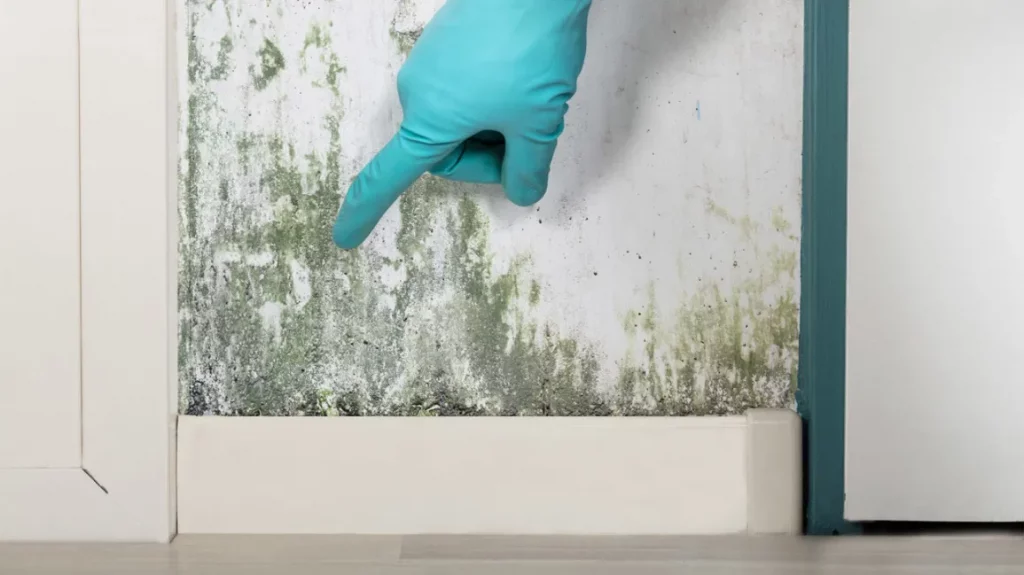When it comes to mold, your bathroom, kitchen, basement, and attic are amongst the most common suspects. These places are regularly exposed to high levels of moisture and are among some of the most common areas for a possible mold overgrowth. However, that doesn’t mean that every mold overgrowth should start in your kitchen or bathroom. There are plenty of suspects of mold overgrowth, and more than a few places could be infected. So if you are checking for a possible mold overgrowth, don’t forget to check:
Inside the toothbrush holder: You didn’t see that coming, did you? The toothbrush holder is one of the places where mold loves to hide. This is because it’s often humid inside the holder, and there isn’t much air circulation. If you notice some black spots on your toothbrush holder, that could be a sign of mold growth.
In your filing cabinets: Yes, you read that right. Mold loves filing cabinets. Since paper is made from wood pulp which offers a hospitable environment for mold overgrowth, a filing cabinet is always a possible mold hazard. If your filing cabinet is stored in a damp room, the chances of mold overgrowth multiply. And once your files are affected by mold, you can say goodbye to any chances of restoring them to their original condition. So, if you don’t want to lose your files to mold, consider airing them once in a while and storing them in a room with regular sunlight.
On toys: If you have young children at home, you have plenty of toys lying around the house. Unfortunately, many of these toys are made from materials that support mold overgrowth. Soft toys, for example, are often made from fabrics like cotton, which can absorb moisture and become a breeding ground for mold spores. And considering how kids like to put everything inside their mouths, toys see plenty of moisture. If you notice any signs of mold on your child’s toys, it is best to throw them away immediately.

Appliance seals and drip pans: Your washing machine, fridge, and dishwasher all have seals and drip pans that can become a mold haven. These places are often out of sight and out of mind, but they should be on your radar when checking for mold in your home. The seals on your appliances can develop leaks over time, allowing moisture to seep in and creating the perfect environment for mold spores to grow. And the drip pans under your appliances can also collect water and debris, leading to mold overgrowth.
On/ under mats: Doormats and floor mats are other unexpected places where mold can hide. Since they are often placed in moist and humid areas, they can easily become a breeding ground for mold spores. And since they are usually made from materials like rubber or fabric, they can absorb moisture and support mold overgrowth.
In your plant pots: If you love keeping plants at home, you probably have a ton of plant pots lying around. And unfortunately, these pots can also be a hotbed for mold overgrowth. This is because the soil in the pot can retain moisture, creating the perfect environment for mold spores to grow. Since many plant pots are made from porous materials like clay, they can absorb moisture and support mold overgrowth.
Beneath wallpaper and drywall: A wallpaper is a good option for any home. You can shape your wall in whatever way you like, and it looks amazing. However, there is one small problem. Mold can hide behind the wallpaper. And if you have mold overgrowth, the wallpaper can act as a food source for the mold. The same goes for drywall. Mold loves to hide behind drywall because it is often moist and humid. And if there is a mold overgrowth, the drywall can provide the perfect food source for the mold.
On plumbing and ductwork: You probably saw this coming. Plumbing and ductwork are hotspots for mold overgrowth. Since they are often moist and humid, they can provide the perfect environment for mold spores to grow. And if there is a mold overgrowth, the plumbing and ductwork can act as a food source for the mold.
Around boilers and water heaters: The moisture is in the name. Since they are often moist and humid, they can provide the perfect environment for mold spores to grow. Mold mostly tends to hide behind the appliances, especially if your bathroom is well lit and airy. The best way to prevent mold overgrowth in and around your boilers and water heaters is to air the area regularly and leave a small gap between the wall and boiler during installation.
Mold can grow anywhere provided that it finds a suitable environment. And it isn’t always your kitchen, bathroom, or the basement. Mold can grow in some dark corner of a well-lit room if it finds the right conditions. So, the next time you spot a green patch on your house, make sure that you check all corners and not just the ones in your basement.






